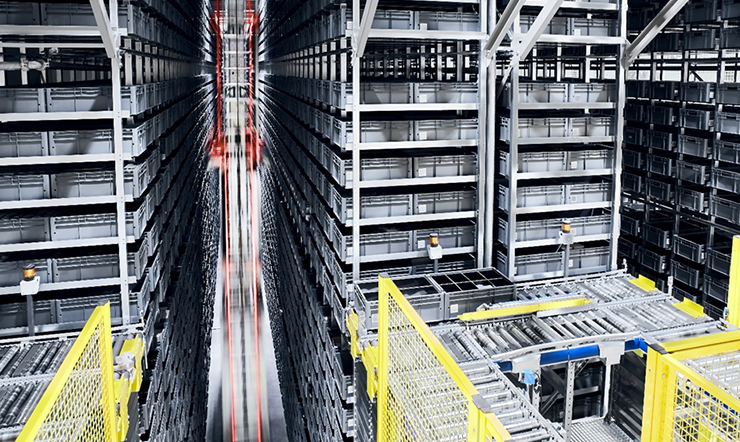Understanding the distinction between a warehouse and a Third-Party Logistics provider (3PL) is crucial for businesses navigating the complexities of supply chain management.
Both play significant roles in logistics, but they serve different functions and offer varying benefits.
This blog will explore these differences in detail, helping you make informed decisions about your logistics needs.
What is a Warehouse?
A warehouse is a physical facility used for the storage of goods. It is primarily designed to hold inventory until it is needed for distribution or sale.
Warehouses can vary in size and complexity, ranging from small storage units to large distribution centers. Their primary functions include:
Storage: The main purpose of a warehouse is to store products for short or long-term periods. This storage can be for raw materials, finished goods, or anything in between.
Inventory Management: Warehouses often employ inventory management systems to track stock levels, manage reorders, and ensure that products are available when needed.
Order Fulfilment: While warehouses primarily focus on storage, many also handle basic order fulfillment tasks, such as picking and packing products for shipment.
Cross-Docking: Some warehouses facilitate cross-docking, where incoming goods are directly transferred to outbound transportation with minimal storage time.
Types of Warehouses
There are several types of warehouses, each serving specific needs:
Public Warehouses: These are owned by third-party companies and rented out to businesses. They offer flexibility for companies that need temporary storage solutions. Public Warehouses are not necessarily 3PLs as they offer more independence to manage the space as the company desires.
Private Warehouses: Owned and operated by a company, these warehouses are used exclusively for that company’s products. They provide greater control over inventory but require significant investment.
Distribution Centers: These are specialized warehouses designed for the rapid distribution of goods. They often feature advanced technology for efficient order processing.
What is a 3PL?
A third-party logistics provider (3PL) is a company that offers outsourced logistics services, which can include transportation, warehousing, and distribution.
Unlike a traditional warehouse, a 3PL manages the entire logistics process for its clients. Their services can encompass:
Transportation Management: 3PLs coordinate the movement of goods from one location to another, utilizing various modes of transport, including trucking, shipping, and air freight.
Warehousing and Storage: While 3PLs have their warehouses, they also manage inventory across multiple locations, providing flexibility and scalability.
Order Fulfillment: 3PLs handle picking, packing, and shipping orders on behalf of their clients, often integrating with e-commerce platforms for seamless operations.
Value-Added Services: Many 3PLs offer additional services such as packaging, assembly, and kitting, providing comprehensive solutions tailored to client needs.
Benefits of Using a 3PL
Utilizing a 3PL can offer several advantages:
Cost Efficiency: By outsourcing logistics, companies can reduce overhead costs associated with maintaining their own warehouses and transportation fleets.
Scalability: 3PLs provide the flexibility to scale operations up or down based on demand, allowing businesses to respond quickly to market changes.
Expertise: 3PLs bring specialized knowledge and experience in logistics, helping businesses optimize their supply chain processes.
Technology Integration: Many 3PLs leverage advanced technology, such as Warehouse Management Systems (WMS) and Transportation Management Systems (TMS), to enhance efficiency and visibility.
Key Differences Between Warehouses and 3PLs
While both warehouses and 3PLs are integral to logistics, the key differences lie in their scope and services offered:
| Feature | Warehouse | 3PL |
| Primary Function | Storage and distribution of goods | Comprehensive logistics management |
| Ownership | Can be public or private | Third-party owned |
| Services Offered | Storage, basic order fulfillment | Transportation, warehousing, order fulfillment, value-added services |
| Cost Structure | Fixed costs for storage | Variable costs based on usage |
| Flexibility | Limited flexibility | High flexibility and scalability |
| Technology | Basic inventory systems | Advanced logistics technology |
When to Use a Warehouse vs. a 3PL
Choosing between a warehouse and a 3PL depends on your business needs:
Use a Warehouse When:
- You want to maintain control over your inventory management.
- You have a stable inventory level and need a dedicated space for storage.
- Your logistics operations are relatively straightforward.
Use a 3PL When:
- You need a comprehensive logistics solution that includes transportation and order fulfillment.
- Your business experiences fluctuating demand and requires scalability.
- You want to leverage the expertise and technology of a logistics provider to enhance efficiency.
Conclusion
Understanding the differences between a warehouse and a 3PL is essential for optimizing your supply chain strategy. While warehouses focus on storage and inventory management, 3PLs provide a holistic approach to logistics, encompassing transportation, warehousing, and value-added services.
By evaluating your specific needs and operational goals, you can determine which option best suits your business and ultimately drives efficiency and growth.
For businesses looking to streamline their logistics operations, partnering with a knowledgeable 3PL can provide significant advantages, including cost savings, scalability, and enhanced operational efficiency.
On the other hand, if your needs are primarily centered around storage, investing in a warehouse may be the more suitable option. Understanding these distinctions will empower you to make informed decisions that align with your business objectives.
At Streamliners, we are committed to helping you make informed decisions about your logistics needs. Whether you choose to utilize a warehouse or partner with a 3PL, we are here to support you in achieving your business objectives and driving growth. By leveraging our expertise and tailored solutions, you can streamline your logistics operations and enhance your overall efficiency.





